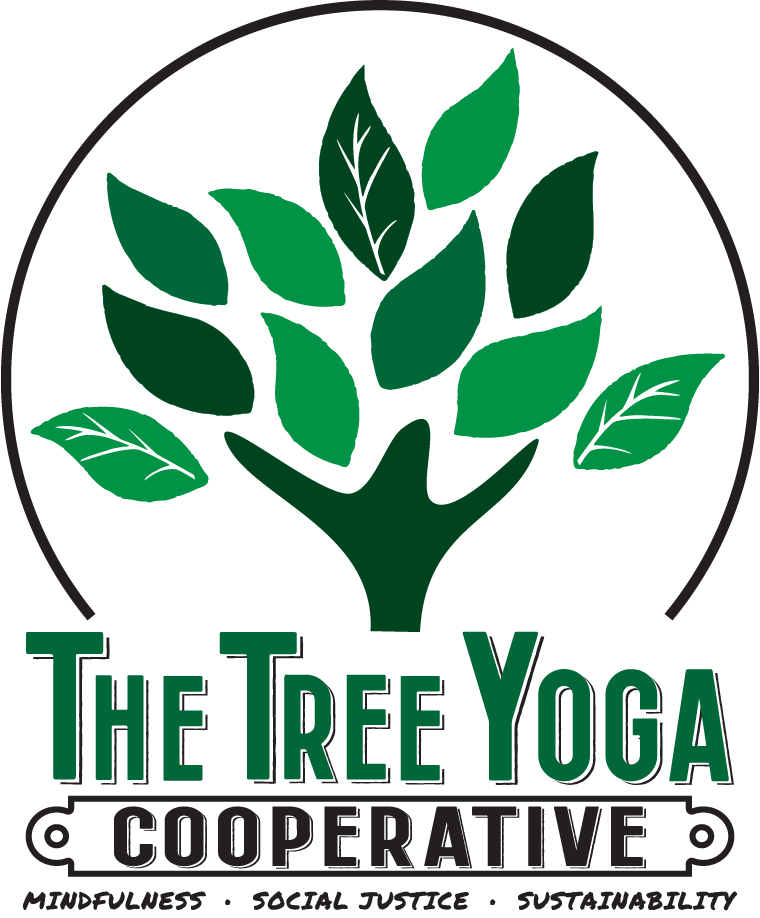Week Seven
After a weekend off, we jumped back into our Saturday and Sunday sessions with Opening Circle, more asana analyses, and two guest lectures. It was a warm welcome back after a much needed break.
SATURDAY
Pictured above, Jana demonstrates a Bound Side-Angle Pose — one of the asanas we studied this weekend.
After our asana discussion (and following a brief curriculum pop quiz review) we welcomed our second guest lecturer of our YTT sessions. Constance “Connie” Hartwell gave an illuminating presentation for our Prenatal Yoga module. Connie is a seasoned yogi who fell into teaching prenatal yoga after realizing she wanted to better serve the pregnant students who often showed up to her classes. In her lecture, Connie broke down her approach to teaching prenatal yoga.
Traditionally, yoga is taught from a male perspective of the body - this can often leave out people whose bodies do not conform to those presumptions. In prenatal yoga, teachers must be especially aware of the physical, emotional, and spiritual vulnerabilities of the student. That is because pregnancy can be a physically, emotionally, and spiritually demanding journey. Teachers must be sensitive to and flexible with their student’s needs. A question one of the cohort’s students had for Connie was: “How can you teach prenatal yoga if you have never been pregnant? Do you ever get pushback?” Connie gave a brilliant response saying that there are many male doctors who oversee births and these men have never been pregnant, and that she had not received any pushback from her students. Furthermore, with proper training, experience, and a love for sharing the practice, Connie was able to grow her knowledge and discover techniques to safely lead her pregnant students through a yoga class. Connie’s experience is a testament to how we as yoga teachers can find ways to make our classes accessible to all students.
SUNDAY
Following our asana analysis, we revisited the writings of the ancient yogi sage, Patanjali. In this discussion of the sutras we explored the nature of the Self. In Book Two of the sutras, Patanjali posits that the nature of the human experience is dual - there is the True Self (also called Purusha, the spirit, or the Seer) and there is Nature (Prakriti, the Seen). The practice of yoga and the settling of the mind can bring clarity as to what is the True Self (what is permanent) and what is not the True Self (what is impermanent). This knowledge can bring peace and greater personal power.
During the last portion of Sunday’s class, we had another guest lecture. Our speaker, Desiree “Dr. Dez” Coleman gave a presentation on Yin Yoga and the Subtle Body. In previous classes we touched on the subtle energy systems of the body. In this lecture, Dr. Dez went into further detail about how to use the knowledge of subtle energy in our own yoga practice — particularly yin yoga. Yin is one half of the duality of energy we see in nature, yang being the other half. Yin energy is reflective, passive, and intuitive while yang energy has vitality, is active, and involves movement. So while a typical yoga class may utilize the more activating and energizing yang energy, yin yoga is meant to take the practitioner inward, to connect to the subtle body. One of the benefits of yin yoga is that it can help to release energy that may be stuck or stored in the body. After the lecture, Dr. Dez led the class in a yin yoga practice. During the practice, our speaker demonstrated a variety of yin yoga postures meant to stimulate the subtle energy of the various chakras. As Dr. Dez put it, you can use the pose to get into the body.
Pictured above, an excerpt from Dr. Desiree Coleman’s presentation on Subtle Energy and Yin Yoga.
WEDNESDAY
This exploration of subtle energy and release fed neatly into Wednesday evenings discussion on our first Niyama (observance), sauca. Sauca, which translates to mean self-purification, is a practice that can help bring clarity and lightness to the practitioner. As a class we discussed how our practice of the yamas (nonviolence, truthfulness, non-stealing, non-excess, and non-attachment) prepare us to practice the observance of self-purification.
In relationship with the self and others, self-purification can look like having pure and honest intentions; meditation can help to purify the mind. In terms of release, purifying practices such as fasting or change in diet can also help the practitioner to find release. These practices can bring clarity to our thoughts, habits, and emotions. In purity and clarity we can create greater space within ourselves which can prepare us to be fully present in the moment. In purity we make space to act with ease and to act in ways that better reflect the eternal soul.


